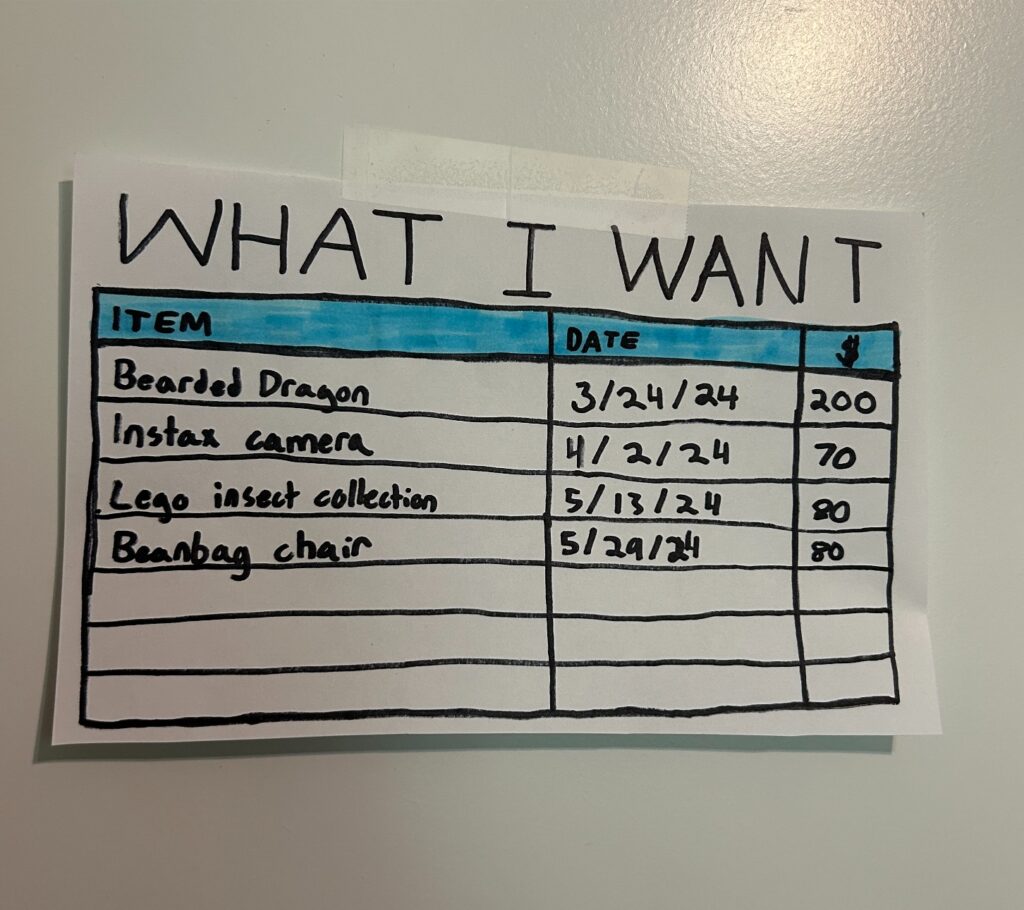This post may contain affiliate links. Read our disclosure here.

One of the many lessons we need to teach our kids is good financial habits. Sadly though most of us don’t have our own accounts in order to really teach much other than “don’t do what I do.” Rather than burying your head in the sand and hoping it all works out, here are some easy ways to teach them that saving money and making wise money decisions can be fun and very rewarding!!
6 Ways to Get Your Kids Excited About Saving Money
Make Their Savings Visual
Use piggy banks, or even simple jars so they can see their money adding up. Make their goals visual too so that they remember why they are saving. Kids don’t do well with open ended savings (neither do adults). So have a few goals, some that are more long term and some that are much smaller and easier to reach.
Have a Pretend 401K
Tell them that you will match their savings money up to a certain amount. If they earn money offering a “family match” for the first $1 they put aside can encourage them to save a lot more. It also helps to make savings a reward rather than feeling like a punishment.
Teach That Saving Is a Choice
Rather than saying “No” you can’t have that car or candy, show them the choice behind it. Would you want to spend your $4 on that stuffed animal (that you already have 3 of) now or have $4 more to spend at Disney on our vacation? Do you want to spend all your birthday money on that shirt? Or would you rather put it aside so you can get that new Kindle you were wanting sooner? It’s changing the decision from being a negative punishment in their mind to being a positive.

Use A “Want List”
For items that are over a certain predetermined amount have them write what they want on a sheet of paper taped to the back of the bedroom door. Put a date next to the item. Tell them that even if they have the money right then, items over this amount must be on the list for at least a month before they buy them. Odds are other wants will come in below today’s must have item and they will decide it wasn’t really that important after all. This teaches so many life lessons all rolled into one!
This was first shared with us in pre-marital counseling as a way to make sure we both agreed with large ticket items. We agreed that any “non-necessary” item over $50 would go on the list. We quickly found that by the time 6 weeks was up we had many other things we wanted and we had either removed the item completely or had other things that were more important. It was great way for both of us to not feel like the other one always got items and that we were both on the same plan.
Help Them Find A Deal
When it comes time to spend their money they’ve been saving, help them see the thrill of stretching their money further with a deal. We show our kids this on every trip to the grocery store, but when they see it with their own money it’s much more thrilling. Offer to help them find sales, coupon codes, and possibly even consignment or slightly used items that will save them a lot over the retail price. This also helps to teach them that purchasing items isn’t done on a whim, but is thought out and planned.
Encourage Giving Along with Saving
While it is important to teach them good financial goals, it is also good to teach our children to give. Have them learn from the start to put aside money to tithe or to share with a charity of their choice. This is also a great one to teach them that giving does not have to be just money. They can donate toys, clothes etc. to lots of places in town. Rather than it being your choice as you clean out old things, let it be their choice of what to donate and encourage them to pick things that other children would love.
See more frugal living tips!



